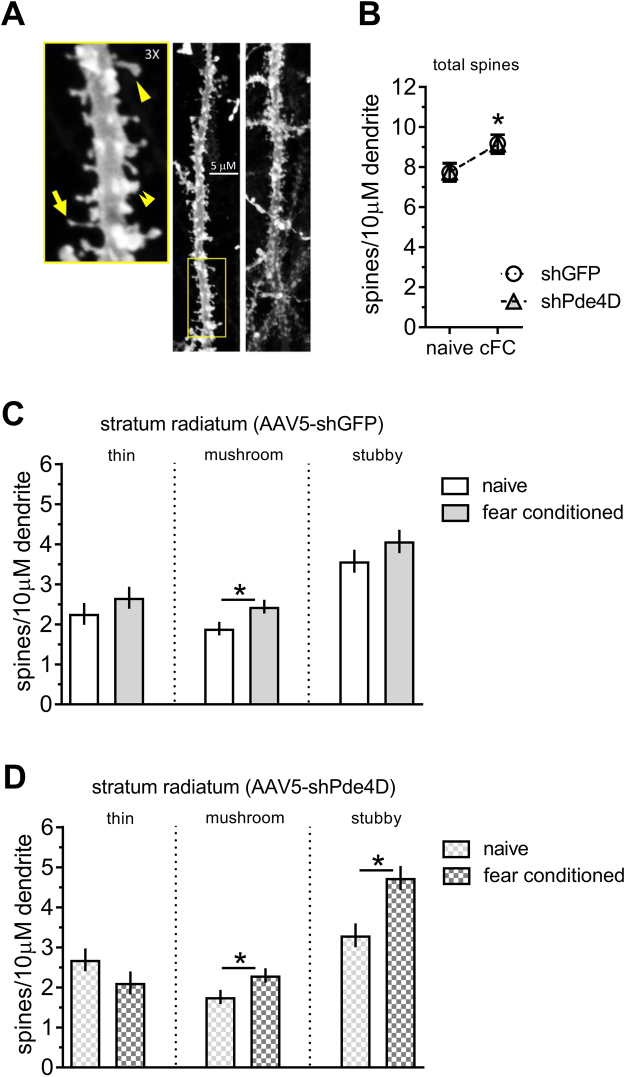Figure 6.
Effect of Pde4d KD and fear conditioning on spines in hippocampal CA1. (A) Representative laser-scanning confocal micrographs of dorsal HC stratum radiatum used for spine analysis. Dendritic segments of CA1 pyramidal neuron secondary apical branches were sampled 0–50 μm from branchpoint. Examples of thin-necked spines (yellow arrow), mushroom (arrowhead), and stubby (double arrowhead) spines in the 3× magnification inset represent the different spine classes. (B) Total spine number is increased by training independent of Pde4d KD. (C) The training induced increase mainly involves mushroom spines in the shGFP control virus injected HC. (D) The training induced increase involves mushroom and stubby spines after Pde4d KD. n = 47–52 cells from 7–8 mice per group. Significant differences from untrained mice (naive) are indicated by an asterisk (*).

